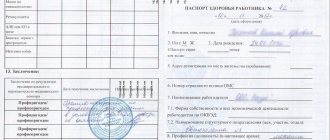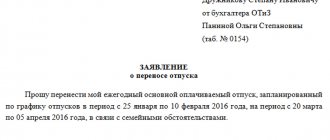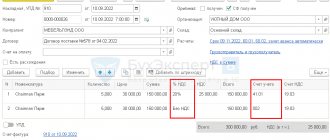When the bank’s currency control will require the issuance of a transaction passport in 2016–2017
According to the general rules, the PS is drawn up:
- on the concluded contract (agreement);
- preliminary contract;
- proposal (offer) to conclude a contract, if it contains all the essential terms of the future contract.
At the same time, the contract (or offer) must meet certain criteria:
- must be concluded between a resident and a non-resident;
- settlements must take place through the accounts of the resident counterparty held in a resident bank of the Russian Federation, or through his own accounts abroad in a non-resident bank;
- the contract is of a specific type;
- the total contract obligation is greater than or equal to $50,000.
For more information about control procedures for various cases, see: “Currency control when transferring money abroad.”
What does the bank do with the transaction passport?
As part of its functions as an exchange control agent, the bank:
- Checks the contract under which the passport is issued for compliance with the legislation of the Russian Federation.
- When completing a transaction, the resident-importer tracks: how much foreign currency is transferred abroad and when;
- how many goods or services that are the subject of the contract are actually supplied to the Russian Federation. To do this, the bank exchanges information with other currency control structures in the Russian Federation, primarily with customs.
How this happens, read more in the article “What is the essence of currency control in customs authorities?”
- When completing a transaction by a resident-exporter, the bank monitors: the completeness and timeliness of receipts of proceeds under the contract into the resident’s accounts;
- fulfillment by the resident-exporter of his obligations under the contract (also jointly with the customs authorities);
- repatriation to the Russian Federation of proceeds received by a resident to accounts in non-resident banks. As part of this function, the bank can exchange information with the Federal Tax Service - in particular, when opening a transaction passport, a resident needs to provide information about their foreign accounts along with notifications from the Russian tax office about their opening.
- the procedure for currency transactions and their compliance with the conditions specified in the loan agreement;
For what types of contracts is it necessary to draw up a PS?
List of agreements with non-resident counterparties that the bank must consider for registration of the PS:
1. Contracts for agency transactions, commissions, orders servicing transactions for the movement of goods across the border of the Russian Federation, with the exception of the movement of securities in documentary form.
2. Contracts for purchase and sale and (or) services accompanying such transactions related to the movement of material assets across the border of the Russian Federation.
3. Contracts with agents, commission agents, attorneys, concluded for the transfer of the results of information and intellectual activity, as well as exclusive rights to them.
4. Contracts under which property is transferred for rent and leasing.
5. Contracts for the receipt and transfer of borrowed funds, as well as the return of such funds within the framework of the contract.
Deadline for submitting the transaction passport to the PS bank
The resident submits to the PS bank the documents specified in paragraph 2.2 of these Regulations in the manner established by the PS bank and within a period agreed with the PS bank not exceeding:
15 calendar days, calculated from the day following the date of release (conditional release) by the customs authorities of imported goods. the customs territory of the Russian Federation or goods exported from the customs territory of the Russian Federation, determined by the marks of the customs authority on the release (conditional release) of goods in the customs declaration (in the case of submitting a cargo customs declaration on the established form - column “D”), which, in accordance with regulatory legal acts in the field of customs are subject to declaration to the customs authorities by submitting a customs declaration, except for the case specified in paragraph three of this paragraph;
15 calendar days, calculated from the day following the date of acceptance by the customs authority of the customs declaration, which is contained in the registration number of the customs declaration, for goods imported into the customs territory of the Russian Federation, which, in accordance with regulatory legal acts in the field of customs affairs, are subject to declaration to the customs authorities in cases of their release by customs authorities before filing a customs declaration;
15 calendar days, counted after the end of the month in which documents were drawn up confirming the export of goods from the customs territory of the Russian Federation or the import of goods into the customs territory of the Russian Federation without filing a customs declaration, or (in the case of performing work, providing services, transferring information and results intellectual activity, including exclusive rights to them) documents confirming the performance of work, provision of services, transfer of information and results of intellectual activity, including exclusive rights to them. The date of execution of the supporting documents specified in this paragraph is the latest date of their signing by one of the parties, if the terms of the contract provide for the signing of the supporting document by both (all) parties to the contract, in other cases - the date of drawing up the supporting document.
How to correctly determine the volume of obligations for a PS
As noted above, the contract amount for registration of a PS must be at least 50,000 US dollars in foreign currency equivalent. To understand whether the limit has been exceeded or not, there are certain rules.
1. Date for rate recalculation (according to foreign currency conversion rates against the ruble established by the Bank of Russia [hereinafter referred to as BR]):
- date of signing the contract at its initial conclusion;
- date of signing (entry into force) of the latest changes to the contract, if any.
2. Nuances of choosing a rate: if the contract foreign exchange rate is not established by the BR, the recalculation must be made at the foreign exchange rate established in another way recommended by the BR.
3. When determining the final amount, the total amount of contractual obligations should not include:
- penalties (forfeits, fines, penalties), which may appear in the conditions;
- the amount of taxes, commissions and other similar payments that each party will have to pay during the execution of the contract.
4. When determining the final amount, the scope of contractual obligations includes:
- for agency transactions - the agent’s remuneration (regardless of the method of repayment) and other funds that can be received by the agent under the terms of the transaction (reimbursable expenses, funds transferred by the agent to the principal);
- for loan contracts - the amount of the principal debt.
What are the deadlines for obtaining a PS in various situations?
When a Russian resident acquires rights and (or) obligations under an international contract, he must begin work on registering the IP within the following time frame:
- When initially concluding a transaction, the PS must be executed no later than the deadline: when you need to present a certificate of currency transaction to the bank;
- when you need to provide the bank with a certificate of supporting documents;
- date of submission of the declaration (or equivalent document) for goods;
- applications for conditional release (applications for release of a component) of exported goods.
Moreover, the earliest possible event is considered as the deadline.
A complete list of deadlines depending on the events taken into account is presented in clause 6.5 of Bank of Russia Instruction No. 138-I dated June 4, 2012.
- If Resident 1 has assigned his rights under the contract to Resident 2 or transferred the debt under the contract to Resident 2, Resident 2 must create a new PS:
| Conditions of assignment | Deadlines for Resident 2 |
| Resident 1 has closed his PS and payments under the contract are not being carried out | No later than 30 days from the date of closure of the PS by Resident 1 |
| Resident 1 closed his PS, but payments under the contract are ongoing | Within the time limits established by paragraphs. 6.5 and 12.2 instructions No. 138-I |
- If the bank where the resident is served has had its license revoked, the license must be reissued in a new bank:
| Circumstances | Deadlines |
| The license of the old bank was revoked, there are no transactions under the contract for accounts in the new bank | No later than 30 working days from the date of license revocation |
| The license of the old bank was revoked, a contract transaction was carried out on the account in the new bank | No later than 15 working days from the date of transaction |
- In the event of a resident transferring from one bank to another, the principle for determining the timing is the same as in the case of a change of bank when the license is revoked.
What is a foreign exchange transaction passport?
Transaction passport is a document containing a set of information representing this transaction to the bank as a currency control agent. According to the law of December 10, 2003 No. 173-FZ “On Currency Control”:
- the bank’s responsibility is to exercise currency control over transactions involving the movement of foreign currency between residents of the Russian Federation and non-residents;
- The responsibility of clients who are residents of the Russian Federation is to supply the bank with the necessary information for currency control.
First of all, both responsibilities are fulfilled with the preparation of a transaction passport. The transaction passport itself is a legal consequence of 2 documents:
- Law No. 173-FZ;
- Instructions of the Central Bank of the Russian Federation dated June 4, 2012 No. 138-I “On the procedure for providing documents and information related to currency transactions.”
Read about what is reflected in the transaction passport and the nuances of its execution: “How to issue a transaction passport for foreign exchange transactions?”
What is submitted to the bank for registration of PS
To obtain a PS, a resident client submits the following documents and information to his bank:
- A contract for which a PS is needed (according to the criteria set out above) or an extract from such a contract with information sufficient to form a PS.
- Information about the terms of settlements for the transaction.
- A copy of the notification from your tax office about opening (closing) an account, about changing account details in a foreign bank - if currency transactions (or part of them) under the contract will go through such a bank. The notification must have a mark indicating that the Federal Tax Service has accepted it.
- Other documents and information that the bank may require, taking into account the requirements of instruction No. 138-I. Such documents are usually intended to confirm the data specified by the resident in the PP form he completed.
- PS, filled out in accordance with Appendix No. 4 of Instruction No. 138-I form, in one copy.
If the PS is issued upon transfer from another bank (we discussed the reasons in the section “Time limits for registration of the PS”), then in addition to the documentation package described above, the resident submits:
- PS received from the “old” bank or a copy of such PS in case of revocation of the license from the previous bank.
- Statement of bank control, which must be provided by the “old” bank.
If the PS is drawn up when assigning rights between residents, in addition to the above basic package for the PS, the bank will request:
- A document confirming the fact of an assignment under a contract for which a contract of agreement was previously issued.
- Banking control statement obtained from the original PS.
Transaction passport: registration procedure, purpose
It is intended to provide information necessary for accounting, reporting, and currency control of relevant transactions. The transaction passport is issued in a certain manner, regulated by the Instructions of the Central Bank of Russia. To do this, the client (resident), as the counterparty to the agreement, must contact the relevant bank (its head office or branch), through which settlements (part of them) will be carried out. He may grant a special right to issue a currency transaction passport, conduct currency transactions that are related to settlements under a concluded agreement, or a branch.
For each individual contract, only 1 such passport is issued, except for those listed in the Federal Law.
Basic methods of filling out PS forms
There are several options for forming the PS itself:
- The resident completing it can enter information into the PS form himself (on a paper form in the form established by Appendix No. 4 of Instruction 138-I).
- A PS can be created using a template on the bank’s website, into which you can enter information electronically, and then generate and print an electronic document.
- For clients using remote banking services (RBS), for example, client-banking, Internet banking, PS can be created in the RBS resource and sent through it to the bank for verification.
Find out how to optimize your work with banks using remote banking services: “Advantages of remote banking services for legal entities.”
- And the last case - the PS form can be filled out for the client by bank employees based on the data provided by the client. Typically, such services are specified in the banking service agreement and are paid. In this situation, the client usually provides a standard package of documents and data, but instead of the completed PS form, he submits an application for registration of the PS by the bank.
Entering data into the PS: title section and section 1
1. The title part of the PS indicates the full or abbreviated name of the bank (branch) that issued this PS.
2. In the “Transaction passport dated ____ No.__” field, the bank indicates in the format DD.MM.YYYY the PS date and the number assigned by the bank itself. The resident leaves this field blank.
3. In the field “Transaction passport from ____ No.__” the bank enters information after analyzing the documents received from the client - in the event that a decision is made on the need to form a PS.
4. Section 1 “Information about the resident” is filled out with the following nuances:
- Clause 1.1 indicates: the full or abbreviated name of the legal entity (if the organization is commercial),
- name of the legal entity (for non-profit organizations)
- or full name of an individual entrepreneur, an individual engaged in private practice.
In this section, it is allowed to use standard abbreviations (for example, LLC, IP).
IMPORTANT! If transactions under a contract are carried out by a branch of a legal entity, in clause 1.1 after the name of the legal entity, the designation of its branch must be indicated, separated by a comma.
- Clause 1.2 indicates the address of the location of a resident legal entity or the address of the place of residence of an individual.
If the address does not contain some of the elements for which columns are provided in clause 1.2, such columns must be left blank.
IMPORTANT! Residents whose address (place of residence) is a federal city - Moscow, St. Petersburg, Sevastopol, fill out paragraph 1.2 according to the rule: only the column “Subject of the Russian Federation” is filled in, the column “City” is not filled in.
- In clause 1.3, the OGRN assigned to the resident is indicated.
In the case of registration of a PS by privately practicing individuals (notaries and lawyers), paragraph 1.3 indicates the registration number according to the register of the relevant registration authority (register of notary offices, register of lawyers of a constituent entity of the Russian Federation, etc.).
- In clause 1.4, in the format DD.MM.YYYY, the date of entry into the state registers of the OGRN of legal entities and individual entrepreneurs is entered (for legal entities registered before July 1, 2002, the following is indicated: “01.07.2002”).
In the case of registration of a PS by a privately practicing individual, clause 1.4 indicates the date of the order to vest the notary with powers, indicated in column 3 of the register of state notary offices, or the date of the order to enter information about the lawyer into the register, specified in column 4 of the register of lawyers of the constituent entity of the Russian Federation.
- In clause 1.5 the Taxpayer Identification Number (TIN) is entered and for legal entities - KPP.
IMPORTANT! For a branch of a legal entity, the checkpoint of the branch is affixed (at the location of the latter) .
Entering data into the PS: section 2
Section 2 “Details of a non-resident (non-residents)” is filled out as follows:
- In gr. 1 indicates the name of the non-resident who is a party to the contract: In gr. 2 and gr. 3 in accordance with the All-Russian Classifier of Countries of the World (OKSM) the following are indicated:
- for a foreign legal entity - the name and digital code of the country of its location;
- for a foreign individual - the name and digital code of the country of his place of residence;
- for branches and similar structural divisions of a foreign legal entity located in the Russian Federation, the code of the country of location of the legal entity itself is taken. If the foreigner's country is unknown, in gr. 3 indicates code 997;
- for interstate and intergovernmental organizations, their branches and representative offices in the Russian Federation in gr. 3 indicates code 998.
IMPORTANT: if the country of location of the foreign person is not indicated in the contract (loan agreement), in gr. 3 for individuals the code 999 is entered, for legal entities the name and country code are entered, which the legal entity must inform the counterparty in writing.
In cases of presence in gr. 3 codes 997, 998 or 999 gr. 2 remains empty.
- If the parties to the contract are several non-residents, section 2 indicates information about each of them.
Liability for violation of deadlines for submitting a transaction passport to an authorized bank
For failure to comply with the procedure for submitting accounting and reporting forms for currency transactions... or violation of the established storage periods for accounting and reporting documents for currency transactions, supporting documents and information when carrying out currency transactions or transaction passports, liability is provided for in Part 6 of Art. 15.25 Code of Administrative Offenses of the Russian Federation. In accordance with it, liability is established from 5,000 to 50,000 rubles
. Parts 6.1 – 6.3 Art. 15.25 of the Code of the Russian Federation on Administrative Offenses already establishes special liability for a certain period of violation:
for no more than ten days - a warning or the imposition of an administrative fine on officials in the amount of five hundred to one thousand rubles; for legal entities - from five thousand to fifteen thousand rubles
;
for more than ten, but not more than thirty days - the imposition of an administrative fine on officials in the amount of two thousand to three thousand rubles; for legal entities - from twenty thousand to thirty thousand rubles
;
for more than thirty days - the imposition of an administrative fine on officials in the amount of four thousand to five thousand rubles; for legal entities - from forty thousand to fifty thousand rubles
.
It is possible to avoid liability for late submission of transaction passports to the bank, but this issue is not the simplest. To resolve it, our lawyers need time and documents on the basis of which the organization was brought to administrative responsibility.
For questions regarding the preparation of transaction passports, exemption from liability for late submission to the bank and simply consultations, please contact our company. Our lawyers and attorneys with experience in issues related to the transaction passport will be able to effectively and quickly help resolve the current situation.
Entering data into the PS: section 3
In section 3 “General information about the contract” (form 1 PS) and subsection 3.1 “General information about the loan agreement” (form 2 PS, sheet 1) the following is entered:
- In gr. 1 — contract number. If there is no number, enter “BN” in column 1.
- In gr. 2 in the format DD.MM.YYYY the latest date is entered: signing of the contract,
- its entry into force,
- its compilation (in the absence of two previous dates).
- In gr. 3 and 4 indicate the name and currency code of the contract, respectively (according to classifiers).
- In gr. 5 in the currency indicated in gr. 4, the amount of obligations stipulated by the contract under which the PS is drawn up is reflected. In this case: under the contract for receiving and issuing a loan, the amount excluding interest is indicated (the body of the loan or the principal debt);
- in the case when a resident draws up a new PS, while continuing to fulfill obligations under the same contract, the amount of unfulfilled obligations is reflected;
- if the contract defines the obligation in several currencies and the total equivalent in one of the currencies is not determined - in gr. 3 and 4, the resident indicates information about any of the currencies that appears in the contract, and in gr. 5 - the amount of the obligation, converted into the specified currency at the exchange rate as of the date given in gr. 2;
Why several currencies may appear in contracts, read: “Sample of a currency clause in a contract and its types.”
- if the contract does not contain data for filling out gr. 5, when registering a PS, it indicates: “BS”.
- In gr. 6 in the format DD.MM.YYYY indicates the end date of fulfillment of all obligations under the contract. At the same time, the resident can clarify it himself, based on the terms of the transaction and the nuances of business transactions known to him.
- In gr. 7 (form 2 PS, sheet 1) reflects the amount of funds that will be credited to the foreign accounts of the resident counterparty for transactions the essence of which is the provision of borrowed funds. In other cases, this column does not need to be filled out.
- In gr. 8 (form 2 PS, sheet 1) reflects the amount of foreign currency earnings (income) that will go to the foreign accounts of the resident counterparty under contracts for the provision of borrowed funds. In other cases, this column is not filled in.
- In gr. 9 (form 2 PS, sheet 1) indicates one of the codes for the deadline for fulfilling obligations under contracts for the provision of borrowed funds:
| Code | Execution deadline: interval in days (inclusive) |
| 0 | up to 30 |
| 1 | 31–90 |
| 2 | 91–180 |
| 3 | 181–365 |
| Code | Execution period: interval in years (inclusive) |
| 4 | 1–3 |
| 6 | No deadline (on demand) |
| 7 | 3–5 |
| 8 | 5–10 |
| 9 | more than 10 |
- Subsection 3.2 “Information on the amount and terms of tranches under the loan agreement” is filled out if the terms of the transaction provide for transfers of funds in tranches: In gr. 1 and 2 indicate the name and code of the currency.
- In gr. 3 reflects the tranche amount (in the contract currency).
- In gr. 4 indicates the code for the deadline for completing the tranche in accordance with the table used when filling out gr. 9 subsection 3.1.
- In gr. 5 - expected date of receipt of the tranche.
- In other cases, subsection 3.2 remains blank.
Other sections of the PS
Sections 4, 5 and 7 are filled out by the bank itself after receiving the form from the issuing PS.
Section 6 is intended to indicate information about the previous PP in cases where more than one PP is issued for the same transaction.
Sections 8 and 9 are specialized and are filled out for loan agreements, according to the special conditions included in them. In this material we will not dwell on them in detail. Full information will be explained by the bank if necessary, and can also be found in instruction No. 138-I.
Why can a bank refuse to service a contract or PS?
The list of reasons for the bank’s refusal to issue a PS is closed and is given in paragraphs of instruction No. 138-I:
- clause 6.9.1 - discrepancy between the data specified in the PS and the data contained in the contract and other information received by the bank. This also includes the case if the bank did not see any grounds for opening a PS based on the data received;
- clause 6.9.2 - if the PS form is not filled out as established by instruction No. 138-I;
- clause 6.9.3 - insufficiency of documents and information provided to the bank by the client, as well as identification by the bank of unreliable data among those received;
- clause 6.9.4 - if the bank considers that transactions to be carried out under the contract may be aimed at laundering criminal proceeds or financial support of terrorism.
This norm is prescribed to banks by Law No. 115-FZ dated 08/07/2001. About the main aspects of the application of 115-FZ by banks, read: “The procedure for identifying a client in a bank according to the law 115-FZ.”
Results
Registration of a PS is a mandatory action when a resident of the Russian Federation concludes transactions that are foreign trade. When concluding a transaction and preparing to carry out bank settlements on it, a resident must either make sure that this transaction is subject to an exemption from the execution of a transaction agreement, or report the transaction to his bank and begin processing the transaction agreement.
In addition, it should be taken into account that the PS must be drawn up not only in cases of the initial conclusion of a contract, but also when assigning rights and obligations under a foreign trade contract, if such an assignment occurs between two residents of the Russian Federation.
It is also necessary to re-register the PS in cases where a resident party to a foreign exchange contract moves from bank to bank for various reasons. A new bank opens a new PS.
You can find more complete information on the topic in ConsultantPlus. Free trial access to the system for 2 days.
When it is not necessary to issue a PS
In practice, there are situations when the execution of this type of document is not necessary. The first is when the role of a market player is an entrepreneur who has not registered his activities, or an unregistered legal entity (then the transaction will not be considered a trading operation). The second - if at the time of signing the contract the total amount of the transaction does not exceed 50 thousand dollars. at the rate established by the Central Bank. And the third is when the agreement is implemented between a non-resident and a Russian financial institution (according to the law, financial institutions are exempt from the mandatory registration of a partnership agreement if lending is carried out by foreign companies).









